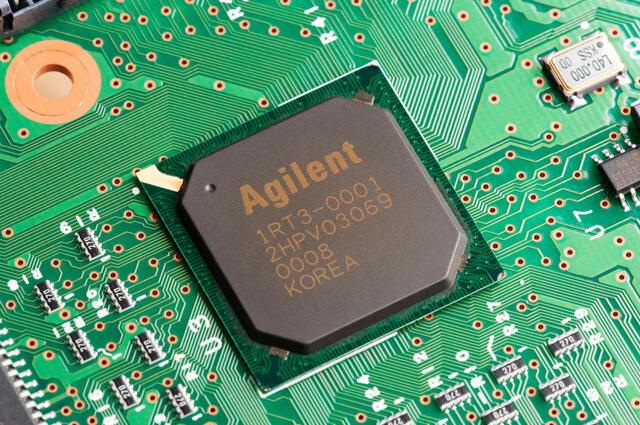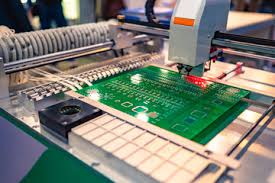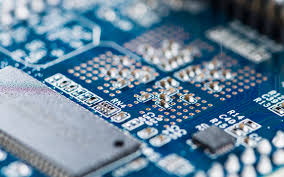Content Menu
● Introduction to SMT Manufacturing Equipment
● Types of SMT Manufacturing Equipment
>> Solder Paste Printers
>> Pick-and-Place Machines
>> Reflow Ovens
>> Inspection Systems
>> Other Supporting Equipment
● The Importance of SMT Manufacturing Equipment
● Conclusion
● Related Questions
>> 1. What is the role of solder paste printers in SMT manufacturing?
>> 2. How do pick-and-place machines work?
>> 3. What types of reflow ovens are available?
>> 4. Why is inspection important in SMT manufacturing?
>> 5. How can manufacturers improve the efficiency of their SMT processes?
Surface Mount Technology (SMT) has revolutionized the electronics manufacturing industry by enabling the efficient assembly of electronic components onto printed circuit boards (PCBs). This technology allows for smaller, lighter, and more reliable electronic devices. In this article, we will explore the various types of SMT manufacturing equipment available, their functions, and their significance in the production process.

Introduction to SMT Manufacturing Equipment
SMT manufacturing equipment encompasses a range of machines and tools designed to facilitate the assembly of electronic components onto PCBs. These machines are essential for achieving high precision, speed, and efficiency in the manufacturing process. The primary types of SMT equipment include solder paste printers, pick-and-place machines, reflow ovens, and inspection systems.
Types of SMT Manufacturing Equipment
Solder Paste Printers
Solder paste printers are crucial in the SMT assembly process. They apply solder paste to the PCB in precise locations where components will be placed. The accuracy of solder paste application directly affects the quality of the solder joints and, consequently, the reliability of the final product.
- Functionality: Solder paste printers use stencils to apply solder paste onto the pads of the PCB. The printer's speed and accuracy are vital for high-volume production.
- Types: There are manual, semi-automatic, and fully automatic solder paste printers, each suited for different production scales.
Pick-and-Place Machines
Pick-and-place machines are the heart of SMT manufacturing. They are responsible for placing components onto the PCB after the solder paste has been applied.
- Functionality: These machines use a vacuum system to pick components from feeders and place them accurately onto the PCB. Advanced models can handle various component sizes and types, including fine-pitch components.
- Types: There are high-speed pick-and-place machines for mass production and flexible machines for low-volume, high-mix production.
Reflow Ovens
Reflow ovens are used to melt the solder paste and create solder joints between the components and the PCB.
- Functionality: The reflow process involves heating the PCB in a controlled manner to ensure that the solder paste melts and then cools to form solid connections. The temperature profile is critical for achieving optimal soldering results.
- Types: There are convection, infrared, and vapor phase reflow ovens, each with its advantages depending on the specific requirements of the assembly process.

Inspection Systems
Inspection systems are essential for ensuring the quality of the assembled PCBs. They help identify defects such as misaligned components, insufficient solder, and other issues.
- Functionality: Automated Optical Inspection (AOI) systems use cameras to capture images of the PCB and compare them against predefined standards. X-ray inspection systems are used for inspecting solder joints in BGA (Ball Grid Array) components.
- Types: Inline AOI systems are integrated into the production line, while offline systems are used for batch inspections.
Other Supporting Equipment
In addition to the primary machines, several supporting tools enhance the SMT manufacturing process:
- Component Feeders: These devices supply components to pick-and-place machines. They can be tape-and-reel, tray, or bulk feeders.
- Conveyors: Used to transport PCBs between different stages of the manufacturing process.
- Cleaning Machines: Essential for removing flux residues and other contaminants from the PCBs after soldering.
The Importance of SMT Manufacturing Equipment
The choice of SMT manufacturing equipment significantly impacts the efficiency, quality, and cost-effectiveness of the production process. Here are some key reasons why investing in the right SMT equipment is crucial:
- Increased Production Speed: High-speed machines can significantly reduce cycle times, allowing manufacturers to meet tight deadlines.
- Improved Quality: Advanced inspection systems help detect defects early, reducing the risk of faulty products reaching the market.
- Cost Efficiency: Automating the assembly process reduces labor costs and minimizes material waste, leading to overall cost savings.
Conclusion
In conclusion, SMT manufacturing equipment plays a vital role in the electronics industry, enabling the efficient assembly of high-quality electronic devices. Understanding the different types of equipment available, such as solder paste printers, pick-and-place machines, reflow ovens, and inspection systems, is essential for manufacturers looking to optimize their production processes. As technology continues to evolve, staying updated on the latest advancements in SMT equipment will be crucial for maintaining a competitive edge in the market.

Related Questions
1. What is the role of solder paste printers in SMT manufacturing?
Solder paste printers apply solder paste to the PCB in precise locations, which is critical for creating reliable solder joints during the assembly process.
2. How do pick-and-place machines work?
Pick-and-place machines use a vacuum system to pick components from feeders and accurately place them onto the PCB, ensuring high precision in the assembly process.
3. What types of reflow ovens are available?
There are several types of reflow ovens, including convection, infrared, and vapor phase ovens, each suited for different soldering requirements.
4. Why is inspection important in SMT manufacturing?
Inspection systems are crucial for identifying defects in assembled PCBs, ensuring that only high-quality products reach the market.
5. How can manufacturers improve the efficiency of their SMT processes?
Investing in high-speed machines, automating processes, and implementing effective inspection systems can significantly enhance the efficiency of SMT manufacturing.




















